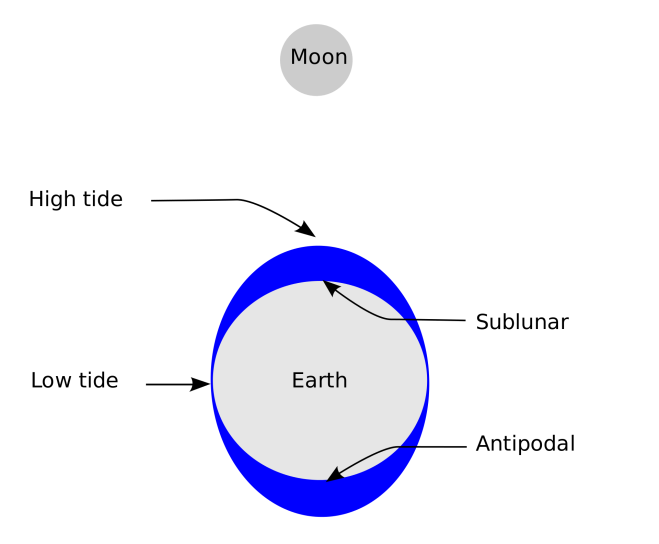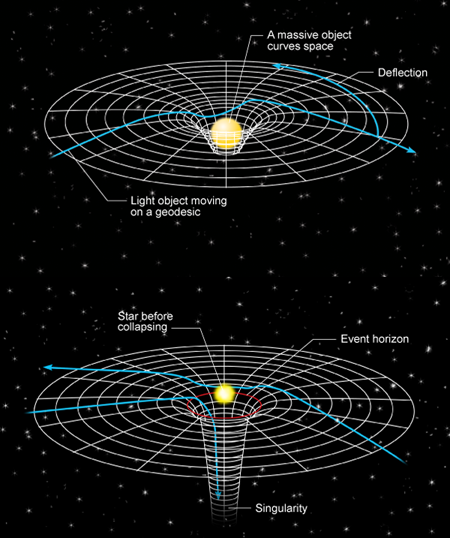One of the most crucial aspects of the Scientific Method is
finding a model that fits observational data. However, what happens when
multiple models fit our observations equally well? Which one do we choose?
Here is where Occam’s Razor comes in. This principle states
that we should generally choose the simplest
model in such situations. Named after 13-14th century English friar,
philosopher, and scholar William of Ockham (who did not invent this principle
but nonetheless used it frequently), Occam’s Razor describes a “shaving away”
of extraneous models. It prevents one from “saving” an unreasonable model by
adding increasing numbers of details. Consider this everyday life example from
the children’s story The Berenstain Bears
and the Truth (by Stan and Jan Berenstain):
Brother and Sister Bear, home alone, play soccer in the
house and the ball ends up hitting Mama Bear’s favorite lamp, breaking it. When
the parents return, they of course ask what has happened, to which the cubs
respond that a bird flew into the window, hit the lamp with enough force to knock
it over, and then flew back out the window. Of course, this would require that
the bird was massive enough to knock over the lamp, that it would collide
directly with a stationary object, and that it wouldn’t leave any other trace
of its presence. Each of these would necessitate further explanation, i.e. the
bird was of a particularly large species, it was somehow disoriented (maybe it
was intoxicated from eating
fermented berries?), and that it left immediately without leaving behind any
feathers. Furthermore, the cubs try to prove they are telling the truth by describing
the unusual features of the bird, e.g. that it was purple with a red head, had
strange feathers growing out of its head, and squawked and whistled. The
parents, however, postulate instead that the lamp was broken by the cubs via
the soccer ball that is sitting in the same room.
Both models (the bird and the soccer ball) perfectly fit the observation (the lamp was broken). However, the bird model is far more complex and requires an absurd amount of explanation to fill in the gaps, so by Occams’ Razor, we should choose the soccer ball model. Occam’s Razor thus helps us reject such ridiculous models that still technically match observations.
Speaking of the Berenstain Bears, many people (myself included) remember their name being spelled as Berenstein. This phenomenon is part of a wider set of mismatches between memories and reality, known as the Mandela Effect. It is named after Nelson Mandela, because the most prominent example is that people remember Mandela having died in prison long ago, when in fact he passed away only about five years ago. Some people attribute this mismatch to influence from alternate universes. For instance, Gaia.com describes the possibility of a “multiverse in which waves of events from a parallel universe have washed over into ours, creating subtle nuances in the time-space continuum.” Although this model would fit with what we are observing, Occam’s Razor states that we should prefer the much simpler explanation: that humans’ fallible brains are simply misremembering information, particularly information accrued during childhood.
Finally, an example from astronomy: Ancient astronomer Claudius Ptolemy proposed a geocentric model of the Solar System in which all the “planets” (including the Sun and Moon) orbit the Earth on circular orbits, which have smaller circles (epicycles) attached to them. This model fit observations at the time, but so did the newer Copernican model, introduced in the 16th century, which had the planets (including Earth) instead orbiting the Sun. Occam’s Razor states that when two models explain data equally well, the simpler one should be chosen, and in this case that is the Copernican model.
Do you have any interesting examples of Occam’s Razor from science or your daily life? And have you experienced the Mandela Effect at some point in your life? (Which of you still remember the Bereinstein Bears?) What do you think causes the Mandela Effect? I’d love to hear your thoughts!
Sources:
Bennett, Jeffrey
O., et al. The Cosmic Perspective. Pearson, 2018.
Berenstain, Stan,
and Jan Berenstain. The Berenstain Bears and the Truth. Paw Prints, 2009.
“False
Memory.” Wikipedia, Wikimedia Foundation, 25 Jan. 2019. Web.
“Occam’s Razor.”
Wikipedia, Wikimedia Foundation, 22 Jan. 2019. Web.
“Mandela
Effect: Is a Parallel Universe Changing Our Reality?” Gaia. Web.
Maxouris,
Christina, and Brandon Griggs. “Birds in Minnesota Keep Crashing into Things
and Police Think It’s Because They’re Drunk.” CNN, Cable News Network, 5 Oct.
2018. Web.










